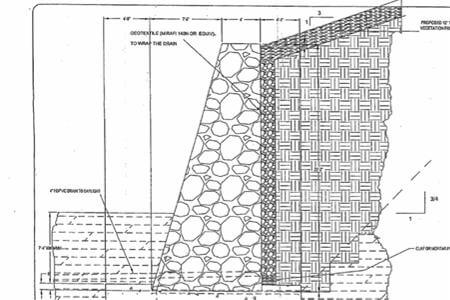
New documents offer more information about the retaining wall that collapsed at the Hills of Rivermist, a neighborhood in San Antonio built by Centex Homes. Comparing the wall’s engineering plans to a memo describing how the wall was actually built shows the retaining wall might have lacked crucial features:
The original engineering plans for the wall, drawn up by Russell Leavens of Enterprise Engineers Inc., show the wall was designed as a gravity wall, which relies on its own weight to remain stable. The contractor that built the wall is the aptly named Gravity Walls Ltd., owned by Chun Lambert. We wrote this story about a city inspection that concluded the wall wasn’t built with enough mortar. Less mortar means less weight, which could destabilize a gravity wall. Lambert hasn’t returned our calls.
After our story was published, city officials continued inspecting the wall. Development Services Director Roderick Sanchez wrote this memo last week laying out the reasons why he believes the wall can’t be patched up. Sanchez offers more details about how the wall wasn’t built to Leavens’ specifications. For example, the wall is missing a layer of limestone and fabric that was supposed to be set behind the structure to capture water and properly drain it through weep holes at the bottom of the wall.
“There are multiple reasons why the wall may have failed,” Sanchez concluded. It could have been a combination of design failure, construction failure, or soil failure beneath the wall, he wrote.
Related: A history lesson about old neighborhoods and race in San Antonio
The memo was posted on a city Web page set up to provide daily updates about Rivermist. The city posts new information at the end of every business day.

Our analysis of USDA Web Soil Survey data (http://www.homeownersoftexas.org/Rivermist_Soil_Survey.pdf) shows the subdivision sits on expansive clay soil that’s unsuitable for building. Maybe that’s why homes blocks away are showing cracks in walls & trim due to foundation problems. A new law that went into effect in September requires new homes built on expansive soil to have engineered foundations, but that doesn’t help these homeowners. And even if other new laws are passed to protect people guard against other kinds of construction defects, they too won’t help people with problems today. That’s why people in the know look at older homes built before 1989 when RCLA was passed and builders shielded themselves from accountability.